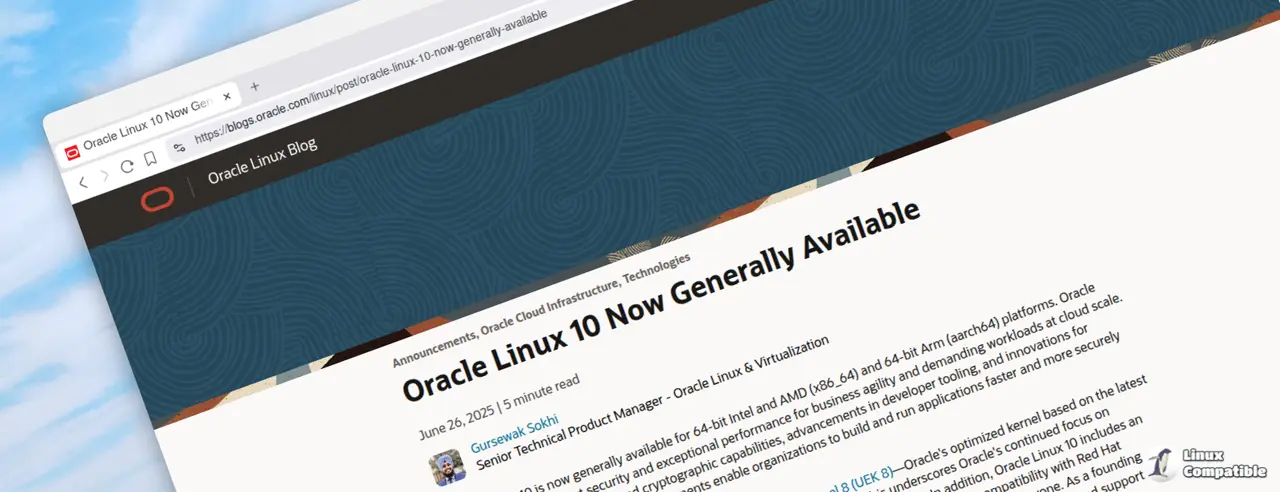The release includes the latest Unbreakable Enterprise Kernel 8 (UEK 8), optimized for data-intensive and compute-heavy tasks, alongside an updated Red Hat Compatible Kernel that ensures complete binary compatibility with Red Hat Enterprise Linux 10. Oracle Ksplice, which allows for zero-downtime patching, is also integrated into Oracle Linux 10, enabling users to apply critical updates without rebooting their systems.
Oracle Linux 10 introduces significant security upgrades, particularly to OpenSSH, which now includes features like keystroke obfuscation to prevent side-channel attacks, enhanced credential security measures, and a rearchitected SSH daemon to reduce vulnerabilities. Additionally, Oracle Linux 10 presents a technology preview of post-quantum cryptography (PQC), aiming to fortify data against future quantum threats, although it is not intended for production use at this stage.
Developer tools have also seen significant enhancements in Oracle Linux 10, with updates to compiler toolchains and the introduction of Valkey, an in-memory key-value store that offers improved performance and scalability over Redis. Other enhancements include updates to programming languages such as Python, Perl, Node.js, and MySQL, which have been optimized for better performance and developer productivity.
For those looking to upgrade, systems running Oracle Linux 8 can easily transition to version 9, and those on version 9 can upgrade to Oracle Linux 10 using the Leapp utility. Additionally, Oracle has a Hardware Certification List (HCL) for servers certified to run Oracle Linux and offers a catalog of independent software vendors (ISVs) that have certified their applications on this platform.
In summary, Oracle Linux 10 positions itself as a robust and secure operating system, catering to the evolving needs of modern enterprises. With its focus on performance, security, and developer usability, Oracle Linux 10 is a significant step forward in the realm of open-source enterprise operating systems. For more detailed information about its features and enhancements, users are encouraged to consult the Oracle Linux 10 Release Notes. The software is available for download through various platforms, including the Oracle Linux yum server and the Oracle Software Delivery Cloud
Oracle Linux 10 released
Oracle Linux 10 is now available for 64-bit Intel and AMD (x86_64) and 64-bit Arm (aarch64) platforms. It provides strong security and outstanding performance to enhance business agility and manage demanding workloads at cloud scale. The primary features encompass enhanced cryptographic functionalities, improvements in developer tools, and innovations aimed at creating robust infrastructure. These enhancements allow organizations to develop and deploy applications more efficiently and securely within distributed and multicloud environments.
The latest Oracle Linux kernel, the Unbreakable Enterprise Kernel 8 (UEK 8), is specifically designed for data-intensive and compute-heavy tasks. Oracle Linux 10 features an enhanced Red Hat Compatible Kernel, ensuring complete application binary compatibility with Red Hat Enterprise Linux 10. Oracle Ksplice offers zero-downtime patching, which is included with Oracle Linux Premier Support, allowing for essential kernel and user space updates without the need for system reboots.


